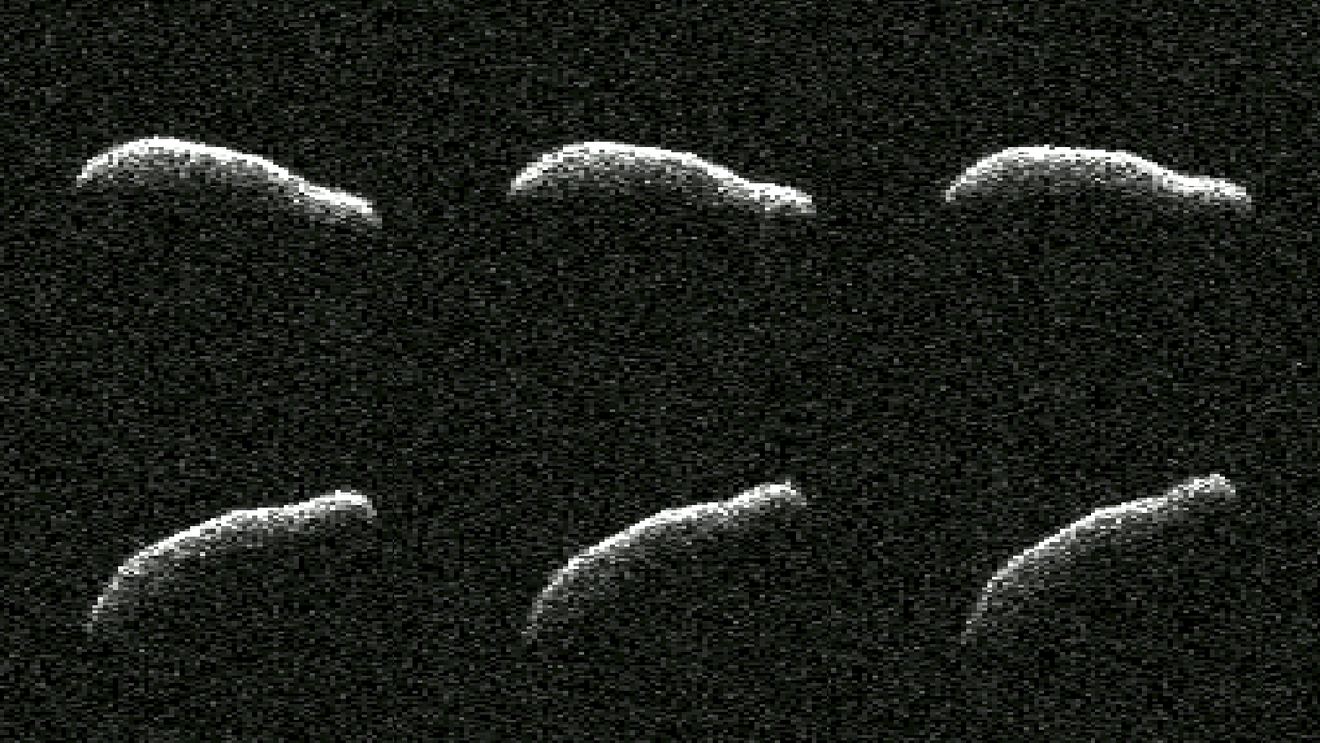An asteroid the size of the Empire State Building flew past Earth in early February, coming within 1.8 million km (1.1 million miles) of our planet. Not only is it approximately the same size as the building, but astronomers found the asteroid – named 2011 AG5 — has an unusual shape, with about the same dimensions as the famous landmark in New York City.
“Of the 1,040 near-Earth objects observed by planetary radar to date, this is one of the most elongated we’ve seen,” said Lance Benner, principal scientist at JPL who helped lead the observations, in a JPL press release.
This extremely elongated asteroid has a length-to-width ratio of 10:3.

Since there was no risk of this asteroid hitting our planet, astronomers took the opportunity to study 2011 AG5, as this is the closest pass the asteroid has made to Earth since its discovery in 2011. Radar observations revealed the object was about 1,600 feet (500 meters) long and about 500 feet (150 meters) wide. The Empire State Building is 1,454 ft (443 meters) tall –counting the spire and antenna — and 187 ft (57 meters) wide.
The asteroid passed about five times the distance between the Earth and the Moon. 2011 AG5 will have another close flyby in 2040 when it comes within three times the Earth-Moon distance.
In years past, astronomers usually called upon the Arecibo radio observatory in Puerto Rico, which was the most sensitive system in the world for observing and detecting near-Earth asteroids. But since the observatory’s collapse in 2020, astronomers have called upon the less-sensitive but more flexible Goldstone radar in California – part of the Deep Space Network — to conduct follow up observations on asteroids.
Using radar, astronomers can measure the distances, sizes, and spin rates of asteroids.
The observations, made on January 29 to February 4, 2023 revealed the surface of 2011 AG5 has subtle dark and lighter regions that may indicate small-scale surface features a few dozen meters across. If seen by the human eye, it would resemble charcoal. It’s rotating slowly, taking about 9 hours to make a complete spin.

Astronomers said beyond contributing to a better understanding of what this object looks like up close, the Goldstone radar observations provide a key measurement of the asteroid’s orbit around the Sun. Radar provides precise distance measurements that can help scientists at NASA’s Center for Near Earth Object Studies (CNEOS) refine the asteroid’s orbital path. Asteroid 2011 AG5 orbits the Sun once every 621 days and won’t have another close encounter with Earth until the 2040 flyby.
“Interestingly, shortly after its discovery, 2011 AG5 became a poster-child asteroid when our analysis showed it had a small chance of a future impact,” said Paul Chodas, the director for CNEOS at JPL. (Read about the uncertainties in this 2012 article). “Continued observations of this object ruled out any chance of impact, and these new ranging measurements by the planetary radar team will further refine exactly where it will be far into the future.”

